Terror and Wonder: The Gothic Imagination, British Library | reviews, news & interviews
Terror and Wonder: The Gothic Imagination, British Library
Terror and Wonder: The Gothic Imagination, British Library
Shlock, horror and shrieks: the story of popular entertainment displayed
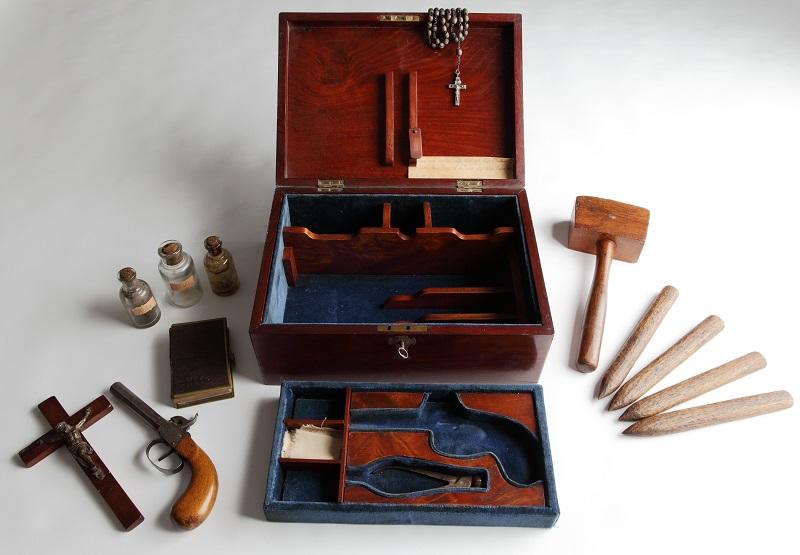
We all romanticise the olden times. Those we think of as belonging to them are no different. The Castle of Otranto – by common consent, the first Gothic novel – was published a quarter of a millennium ago. “Otranto ‘lost its maidenhead’ today,” wrote its author Horace Walpole. To him, if not to us, the 1760s reeked of modernity so he claimed that this was a true story plucked from a cobwebbed Neapolitan library in 1529 – that is, a quarter of a millennium before.
“Tranflated by WILLIAM MARSHAL, Gent,” fibbed the frontispiece. “From the Original ITALIAN of ONUPHRIO MURALTO, Canon of the Church of St NICHOLAS at OTRANTO.” Neither of these people existed, any more than the giant stone statue in the story from which a huge phallic helmet topples, crushing the protagonist’s son and heir.
 For Otranto’s 250th anniversary, the British Library is celebrating all things terrible and horrid, spooky, freaky – and fakey. The Gothic movement was a monstrous carbuncle which sprouted on the powdered face of the 18th century. Where the Age of Reason gave us the trim and tidy rhyming couplet – English literature’s boxed hedge – Gothic celebrated the unruly, the inexplicable, the sublime, the pulse-accelerating and (whisper it very softly) the first tender squeals of the girly orgasm.
For Otranto’s 250th anniversary, the British Library is celebrating all things terrible and horrid, spooky, freaky – and fakey. The Gothic movement was a monstrous carbuncle which sprouted on the powdered face of the 18th century. Where the Age of Reason gave us the trim and tidy rhyming couplet – English literature’s boxed hedge – Gothic celebrated the unruly, the inexplicable, the sublime, the pulse-accelerating and (whisper it very softly) the first tender squeals of the girly orgasm.
In its early days, Gothic fantasy and medieval revivalism were the preserve of filthy rich dilettantes who could afford to build and live in the sort of properties in which their stories were set. Walpole's portrait suggests a tasteful acolyte of Shakespeare and Spenser, which is how he fancied himself, as does his fantastical pile at Strawberry Hill seen in the background. (Pictured: Horace Walpole by John Giles Eccardt, 1754 © National Portrait Gallery.) William Beckford, author of Vathek (1781) – in which a prince tries to sell himself to the devil – erected the even more overblown Fonthill Abbey in Wiltshire (now sadly gone, here reproduced as a bristling model). Reynolds painted him as a dark-eyed young romantic with his head in the clouds.
These tales were read by the moneyed, and no one was read more than Anne Radcliffe. In The Mysteries of Udolpho she conjured up beetling Alpine crags and labyrinthine castles without the bother of leaving England. A recently unearthed letter affords a glimpse of the elegant cursive hand (pictured below © British Library Board) which summoned all these ghastly visions, here tetchily dressing down her mother-in-law (“Dear Madam…”).
 It’s a lovely exhibit which bathetically undercuts Mrs Radcliffe as supplier of thrills. Later, of course, Jane Austen would undercut her too in Northanger Abbey, a novel completed in 1799 but not published till after her death in 1817, in which she lampoons the hysterical taste for the horrid. There was much to satirise. “I dote on ruins,” swoons the heroine of Eliza Parsons’ forgotten novel Lucy (1794). Hogarth got in on the act, twitting the credulous in A Medley of Superstitions, while Gillray’s Tales of Wonder (1802) depicts four well-dressed ladies shuddering at the latest terror tale.
It’s a lovely exhibit which bathetically undercuts Mrs Radcliffe as supplier of thrills. Later, of course, Jane Austen would undercut her too in Northanger Abbey, a novel completed in 1799 but not published till after her death in 1817, in which she lampoons the hysterical taste for the horrid. There was much to satirise. “I dote on ruins,” swoons the heroine of Eliza Parsons’ forgotten novel Lucy (1794). Hogarth got in on the act, twitting the credulous in A Medley of Superstitions, while Gillray’s Tales of Wonder (1802) depicts four well-dressed ladies shuddering at the latest terror tale.
 The allure of Gothic terror was overtaken somewhat by the French Revolution, in which tales of blood dripping down the walls of aristocratic domains were no longer the stuff of Henry Fuseli’s phantasmagorical canvases (pictured: The Nightmare, after Henry Fuseli. Print made by Thomas Burke, 1783. British Museum.) The result was the likes of The Monk, the ramped-up horror novel by Matthew Lewis MP which luxuriated in the lurid and the lewd. “Sometimes,” his incarcerated heroine reports, “I felt the bloated toad, hideous and pampered with the poisonous vapours of the dungeon, dragging its loathsome length along my bosom.” This was posh Regency porn, rather toned down in the second edition after there were complaints. Wordsworth disapproved, even if his own poems were stuffed with dreamy visions of roofless ruins. Coleridge deemed The Monk “a romance which if a parent saw in the hands of a son or daughter, he might reasonably turn pale.” That word “reasonably” is a treat. There was nothing reasonable about Gothic, and especially not the genre’s most infamous night of creation in Villa Diodati, when Mary Shelley bested both her husband and Lord Byron and gave birth to Frankenstein’s monster. That torrid soiree on Lake Geneva in 1816 is well represented here, best of all by an annotated manuscript (pictured below © The Bodleian Libraries, University of Oxford)
The allure of Gothic terror was overtaken somewhat by the French Revolution, in which tales of blood dripping down the walls of aristocratic domains were no longer the stuff of Henry Fuseli’s phantasmagorical canvases (pictured: The Nightmare, after Henry Fuseli. Print made by Thomas Burke, 1783. British Museum.) The result was the likes of The Monk, the ramped-up horror novel by Matthew Lewis MP which luxuriated in the lurid and the lewd. “Sometimes,” his incarcerated heroine reports, “I felt the bloated toad, hideous and pampered with the poisonous vapours of the dungeon, dragging its loathsome length along my bosom.” This was posh Regency porn, rather toned down in the second edition after there were complaints. Wordsworth disapproved, even if his own poems were stuffed with dreamy visions of roofless ruins. Coleridge deemed The Monk “a romance which if a parent saw in the hands of a son or daughter, he might reasonably turn pale.” That word “reasonably” is a treat. There was nothing reasonable about Gothic, and especially not the genre’s most infamous night of creation in Villa Diodati, when Mary Shelley bested both her husband and Lord Byron and gave birth to Frankenstein’s monster. That torrid soiree on Lake Geneva in 1816 is well represented here, best of all by an annotated manuscript (pictured below © The Bodleian Libraries, University of Oxford)
 What follows is a history of the democratisation of entertainment, as the taste for fiction trickled down the social ladder via Dickens, Collins and the Brontës, until the Victorian fin de siècle gave us the divided selves of Jekyll and Hyde and that covert sexual liberator, Count Dracula. Among letters, prints, posters and rather too many editions of books, there are curios such as a vampire-killing kit of uncertain provenance, complete with crucifix, mallet and a variety of stakes, a skeleton clock, and a letter from a fake Jack the Ripper in suitably red ink.
What follows is a history of the democratisation of entertainment, as the taste for fiction trickled down the social ladder via Dickens, Collins and the Brontës, until the Victorian fin de siècle gave us the divided selves of Jekyll and Hyde and that covert sexual liberator, Count Dracula. Among letters, prints, posters and rather too many editions of books, there are curios such as a vampire-killing kit of uncertain provenance, complete with crucifix, mallet and a variety of stakes, a skeleton clock, and a letter from a fake Jack the Ripper in suitably red ink.
In the 20th century film takes up the story. The scream on the looping clip of James Whale’s The Bride of Frankenstein (1935) may well drive you nuts. And if that doesn’t, the persistent chants from The Wicker Man should send you round the twist.
Gothic was never not meretricious and camp, but it became more so as it trained its eye on the bottom line. The more intriguing portion of its history occurs in those elitist beginnings rather than among the schlocky daubs that came later, courtesy of Clive Barker and even the Chapman Brothers (see gallery overleaf). The early dilettantes were questing for something fetid and rank within. The later story of terror devolves into the all too rational pursuit of the box office take. The romance has gone. We do end, however, on a lovely note of ghoulish nostalgia, with Martin Parr’s portraits of modern goths gathering at Whitby in North Yorkshire, where Dracula was brought ashore in his coffin. Here be fantasists in face paint and deadly dark hairdyes, still living the nightmare.
Overleaf: browse a gallery of chilling images from the exhibition
Click on the thumbnails to enlarge
Explore topics
Share this article
The future of Arts Journalism
You can stop theartsdesk.com closing!
We urgently need financing to survive. Our fundraising drive has thus far raised £33,000 but we need to reach £100,000 or we will be forced to close. Please contribute here: https://gofund.me/c3f6033d
And if you can forward this information to anyone who might assist, we’d be grateful.

Subscribe to theartsdesk.com
Thank you for continuing to read our work on theartsdesk.com. For unlimited access to every article in its entirety, including our archive of more than 15,000 pieces, we're asking for £5 per month or £40 per year. We feel it's a very good deal, and hope you do too.
To take a subscription now simply click here.
And if you're looking for that extra gift for a friend or family member, why not treat them to a theartsdesk.com gift subscription?
more Visual arts
 Help to give theartsdesk a future!
Support our GoFundMe appeal
Help to give theartsdesk a future!
Support our GoFundMe appeal
 Echoes: Stone Circles, Community and Heritage, Stonehenge Visitor Centre review - young photographers explore ancient resonances
The ancient monument opens its first exhibition of new photography
Echoes: Stone Circles, Community and Heritage, Stonehenge Visitor Centre review - young photographers explore ancient resonances
The ancient monument opens its first exhibition of new photography
 Hylozoic/Desires: Salt Cosmologies, Somerset House and The Hedge of Halomancy, Tate Britain review - the power of white powder
A strong message diluted by space and time
Hylozoic/Desires: Salt Cosmologies, Somerset House and The Hedge of Halomancy, Tate Britain review - the power of white powder
A strong message diluted by space and time
 Mickalene Thomas, All About Love, Hayward Gallery review - all that glitters
The shock of the glue: rhinestones to the ready
Mickalene Thomas, All About Love, Hayward Gallery review - all that glitters
The shock of the glue: rhinestones to the ready
 Interview: Polar photographer Sebastian Copeland talks about the dramatic changes in the Arctic
An ominous shift has come with dark patches appearing on the Greenland ice sheet
Interview: Polar photographer Sebastian Copeland talks about the dramatic changes in the Arctic
An ominous shift has come with dark patches appearing on the Greenland ice sheet
 Donald Rodney: Visceral Canker, Whitechapel Gallery review - absence made powerfully present
Illness as a drive to creativity
Donald Rodney: Visceral Canker, Whitechapel Gallery review - absence made powerfully present
Illness as a drive to creativity
 Noah Davis, Barbican review - the ordinary made strangely compelling
A voice from the margins
Noah Davis, Barbican review - the ordinary made strangely compelling
A voice from the margins
 Best of 2024: Visual Arts
A great year for women artists
Best of 2024: Visual Arts
A great year for women artists
 Electric Dreams: Art and Technology Before the Internet, Tate Modern review - an exhaustive and exhausting show
Flashing lights, beeps and buzzes are diverting, but quickly pall
Electric Dreams: Art and Technology Before the Internet, Tate Modern review - an exhaustive and exhausting show
Flashing lights, beeps and buzzes are diverting, but quickly pall
 ARK: United States V by Laurie Anderson, Aviva Studios, Manchester review - a vessel for the thoughts and imaginings of a lifetime
Despite anticipating disaster, this mesmerising voyage is full of hope
ARK: United States V by Laurie Anderson, Aviva Studios, Manchester review - a vessel for the thoughts and imaginings of a lifetime
Despite anticipating disaster, this mesmerising voyage is full of hope
 Lygia Clark: The I and the You, Sonia Boyce: An Awkward Relation, Whitechapel Gallery review - breaking boundaries
Two artists, 50 years apart, invite audience participation
Lygia Clark: The I and the You, Sonia Boyce: An Awkward Relation, Whitechapel Gallery review - breaking boundaries
Two artists, 50 years apart, invite audience participation

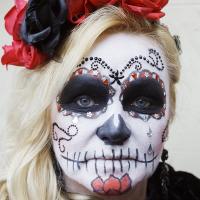

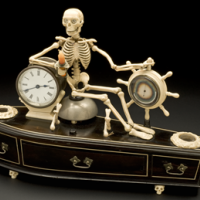
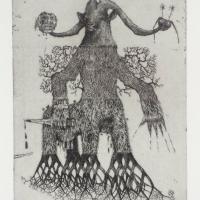
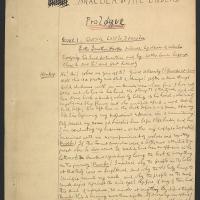
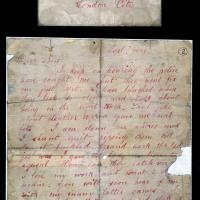


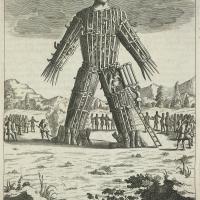
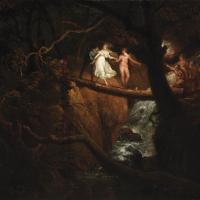
Add comment